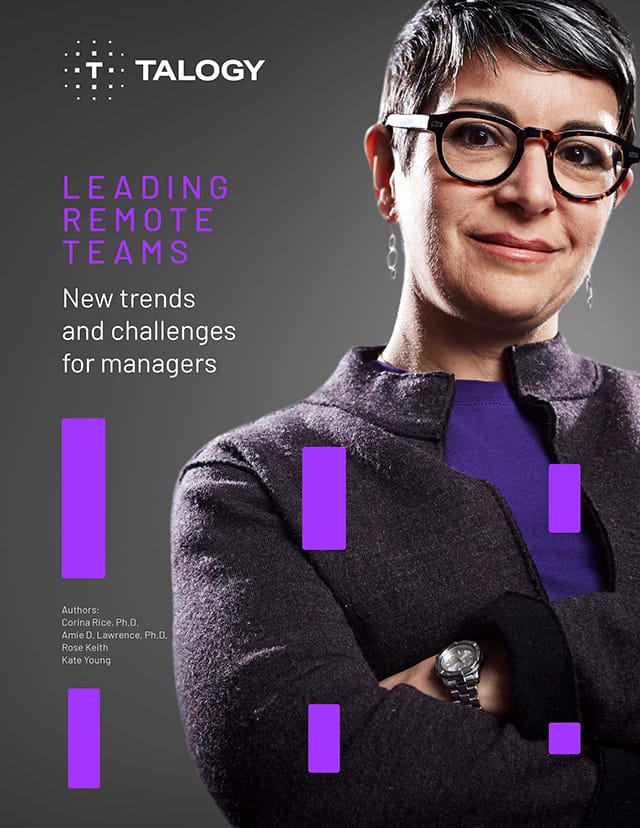Written by Sally Tanski, Managing Consultant and Shahani Jayesinghe, Principal Consultant
We’re noticing a theme in our recent work with leaders:
Scenario 1: In a one to one coaching session, a leader, struggling to motivate her jaded and seemingly disinterested team realised “I just don’t know enough about them all as people.”
Scenario 2: During a leadership development programme, two leaders from different departments realised they can solve a problem for one another – a problem they hadn’t known the other was experiencing. “Why did it take a leadership development programme for us to realise this?” they wondered.
The theme in both scenarios? It’s all about social capital. Defined by McKinsey as networks, relationships, shared norms, and trust among individuals, teams, and business leaders, it’s ‘the glue that brings people together.’ And it’s important in many ways, including business performance. Research1 shows that when people are connected to one another, their boss, and the purpose of the organisation, they are more likely to be agile, have satisfied customers, and be engaged.
But the nature of this glue is changing, accelerated by the pandemic and our resulting transformation in working habits and practices. Our research here at Talogy tells us that remote and hybrid working are seen as one of the top five leadership challenges in the next five years. The need to maintain connection with individual employees as well as promote feelings of social belonging and inclusion within teams means leaders need to shift their thinking and their actions to make sure everyone benefits from strong social capital at work.
The good news is that as social creatures, we are driven to connect. And while it’s an innate need of ours, creating the conditions to quickly and effectively build connections and strong relationships can take time and requires intentionality. So, how can leaders create and enable the conditions for social capital to thrive in the world we work in now? Here are a few ideas:
-
- Know what kind of connection is needed
A starting point for most of us is recognising the different aspects of connection that we may need to leverage in certain situations. The Rethread research2 calls out different ways we connect: emotionally (what we feel) versus intellectually (what we know). Additionally, where we are on our journey to connect plays a role: forming connections with people, ideas, and information requires a different approach than deepening existing connections.
Leaders can enable intellectual relationships to form and grow by providing information to make getting to know one another and using what we know about people – e.g. allocating work – easy and meaningful. To support people in forming an emotional connection, leaders can role model how to share more about who they are, ideally in a captivating and memorable way. They can deepen that connection by providing realistic and relevant opportunities for collaboration, peer support, and challenges, enabling people to connect by sharing difficult feedback in a considerate way.
-
- Develop trust
Strong relationships are formed from mutual trust and respect. Leaders can role model this by developing an approach of carefully trusting their teams by asking enough of people to be challenging without overwhelming them. Equally, leaders can invite the trust of their teams by showing authenticity – being honest about their feelings and mood (good or bad) – while also being consistent in their approach and living their personal values.
- Communicate effectively
Taking time to think about when and how to share information is crucial to developing and maintaining strong connections with people. The timing and content of key messages can make or break these connections, and success depends on knowing what really matters to people. To really listen, leaders should take a few steps:
- Clear their minds and their desks
- Suspend judgment and bias
- Focus on what someone says and the meaning behind it
- Pay attention to subtle changes in body language and tone of voice which convey real meaning
Skilful use of questions – encouraging people to open up and talk not only about what they’re doing but how they’re doing – is also key.
Here at Talogy, we see emotional intelligence as the vital skillset to enable leaders to enhance their ability in building social capital. Emotional intelligence (EI) is about the ‘intelligent use of our emotions’ or ‘thinking about our feelings to guide our behaviour.’ It’s the habitual practice of thinking about feeling and feeling about thinking determined by an awareness of the underpinning attitudes we hold about ourselves and others.
We identify 16 key skills of EI and they support building social capital in many ways, for example:
- Leaders who are aware of their own and others‘ emotions communicate effectively – knowing what to say, how to say it, and when to address it in order to meet people’ s needs and have maximum impact
- Leaders who are authentic and flexible are better able to develop trust
- Leaders who have high capability in connecting with others typically invest time in maintaining and developing relationships, giving and receiving help, networking, and bringing people together to meet needs and solve problems which are all fundamental building blocks of social capital.
Leaders who have strong EI are more adaptable, creative, and resilient and therefore better able to create an environment where connection can flourish, especially in a virtual or hybrid work environment. And yet in a management survey by the Roffey Park Institute3, almost half of leaders surveyed (49%) do not believe that the management in their organization has the skills needed to effectively manage virtual teams – skills that are vital to rebuilding social capital.
Sources:
1Rethread research, published by Enboarder ‘Rethinking Connection for a Hybrid Work World’
2Rethread research, published by Enboarder ‘Rethinking Connection for a Hybrid Work World’
3Lucy, D., Wellbelove, J., Poorkavoos, M., & Hatcher, C. (2018). The Management Agenda 2018. Roffey Park


